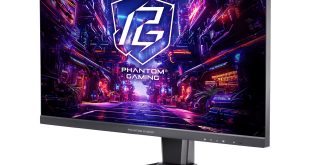The price of TFT screens has plummeted over the past 2 years. At the same time, the glass panels that are used to make monitors have been getting bigger and bigger. More screen real estate is always better. These advances allow you have more applications open at once, play games in a more immersive way and watch films on a bigger screen.
Technologies
Sizes are measured diagonally in inches, resolutions in pixels (width x height). High definition means that the height is at least 1080 pixels. Older screens connected using a VGA or DVI port. New screens have support for HDMI or Displayport as well. Older cards support up to 2 displays simultaneously, while the latest ATI cards can drive up to 3 Displayport screens at once.
Resolution
Low-grade 19” and 20” screens run at 1680 x 1050 and cost under £100. With 22” HD screens available to the trade for less than £100, this has to be considered entry-level. These will run at 1920×1080 resolutions and have ultra-fast response cycles. Image quality is a personal thing, but most screens are good enough for general use. Moving through 24” to 26” and 27” screens, the resolution doesn’t change. That means you will get the same number of pixels – but bigger. When the screen size increases, you will lose some quality. To get a higher resolution, you need to look at 30” screens which can deliver 2560×1600 – but these are prohibitively expensive with a trade price closer to $1,000.
Image Quality
There is no substitute for getting hands-on with a screen when it comes to working out which one is best for you. However, the input signal you see displayed in a store is often very low grade and won’t show the screen off properly. When deciding, look at how black the screen is in areas that are not lit, also look for whiter-whites. When gaming, you might see the picture occasionally ‘break’. This is called shearing. If your graphic card is able to run the game at more than 60 frames per second, then you can force the screen to synchronise with the card at 60Hz. This is called VSynch and improves image quality.
Most of the screens in the KitGuru lab are made by Iiyama. They are not necessarily better than similar models from LG, Samsung etc, but they were first to deliver 1080p in a 22” package and that was enough. If you’re a professional user (or tend to have multiple Messenger windows open), consider adding a second screen for £100.
Buy links…
Dabs
Overclockers
YOYOTech
 KitGuru KitGuru.net – Tech News | Hardware News | Hardware Reviews | IOS | Mobile | Gaming | Graphics Cards
KitGuru KitGuru.net – Tech News | Hardware News | Hardware Reviews | IOS | Mobile | Gaming | Graphics Cards


